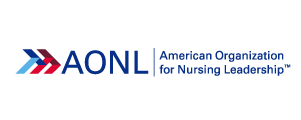
Protocols to Prevent SSIs and SSCs: Initiatives to Improve Outcomes
Protocols to Prevent SSIs and SSCs: Initiatives to Improve Outcomes
[Sponsored] Hospital-acquired conditions, such as surgical site infections (SSIs) and complications (SSCs), are a major burden to the U.S. health care system. With 60% of SSIs considered to be preventable, clinical protocols can make a critical difference in avoiding delayed discharges, costly readmissions, and delayed healing post-surgery. In this executive dialogue, nurse executives discuss how organizations can reduce the incidence of SSIs and SSCs through greater transparency, collaboration and enhanced clinician and patient education.
This executive dialogue will highlight key findings on:
- Continued fatigue from the COVID-19 pandemic presents an ongoing challenge for hospitals and health systems. Emphasis must be placed on adherence to handwashing and basic infection prevention techniques to prevent and manage SSIs and SSCs.
- Identifying risk factors for SSIs enables targeted education to prevent their occurrence. One solution is to implement a pre-surgical preparation clinic to work closely with high-risk patients in the weeks leading up to their procedure.
- Data is a strong influencer and can significantly impact clinician behavior. Organizations should consider sharing individual performance data in advance of team meetings to facilitate a productive discussion.
- Additional guidelines are needed to identify when to delay surgery for patients at high-risk for infections.
- Gaps in patient education can result in post-discharge infections leading to readmissions. Organizations should reassess their patient education and develop easy to understand guidelines for wound care and conduct patient follow-up calls post-discharge.
Sponsored by


Related Resources
Guides/Reports
The role of the system chief nurse executive (CNE) is a sub specialty of nursing leadership and requires its own set of competencies.
Guides/Reports
The Nursing Organizations Alliance believes that a healthy practice environment is supported by the presence of the following elements.
Sponsored White Papers
[Sponsored] Activate overwhelmed and uninvolved patients using education solutions designed to inform and connect.
Sponsored Content
[Sponsored] Investing in nurse education and development is critical for hospitals and health systems to successfully transit
Reflections
On September 12, 2010 delegates from the American Organization for Nursing Leadership and their guests embarked on a trip halfway around the world
Toolkits/Methodology
?Member Only? The role of the nurse executive in patient safety is to help lead best practices and establish the right culture across multiple…

